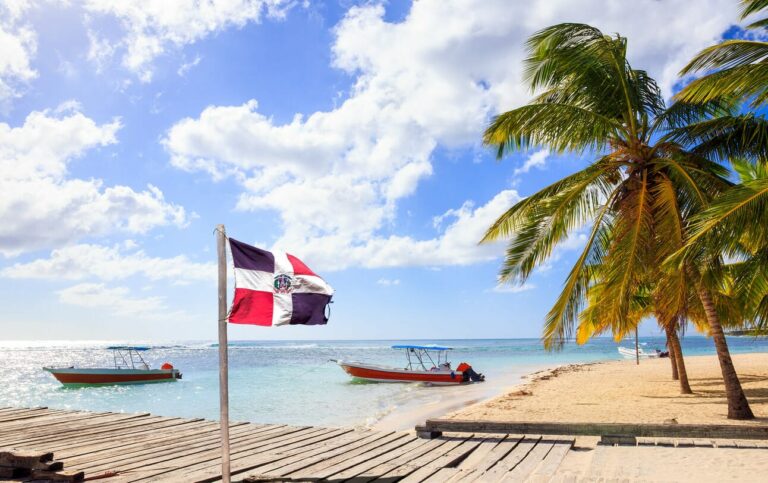The Dominican Republic has a long and storied history of tobacco cultivation and cigar production. With a favorable climate and rich soil, the island nation has become one of the world’s premier sources for premium cigars. Dominican cigars are renowned for their smooth, well-balanced flavors and superb craftsmanship, appealing to both casual and seasoned aficionados alike. In this article, we will delve into the history of Dominican cigars, the processes behind their production, and the distinctive characteristics that set them apart in the world of fine tobacco.
A Brief History of Tobacco in the Dominican Republic
Tobacco has been cultivated in the Dominican Republic for centuries, with indigenous Taino people using the plant for both medicinal and ceremonial purposes. The arrival of Christopher Columbus in 1492 introduced tobacco to Europe, and the Dominican Republic quickly became an essential source of the crop.
The modern era of Dominican cigar production began in the early 20th century, with the influx of Cuban tobacco growers and cigar makers seeking refuge from political unrest. Many of these skilled artisans brought with them their expertise and knowledge, as well as prized Cuban tobacco seeds. Over time, the Dominican tobacco industry adapted and expanded, embracing new techniques and cultivating hybrid tobacco varieties to create a distinctly Dominican cigar.
Tobacco Cultivation and Varieties
The Dominican Republic is home to several tobacco-growing regions, each with its unique characteristics. The most famous and highly regarded region is the Cibao Valley, which stretches across the northern part of the country. The valley’s fertile soil and moderate climate provide ideal conditions for growing high-quality tobacco.
Dominican cigars typically incorporate a blend of different tobacco varieties, including:
- Piloto Cubano: A Cuban-seed tobacco known for its rich, full-bodied flavor and excellent burning characteristics.
- Olor Dominicano: A native Dominican variety with a medium-bodied, slightly spicy profile.
- San Vicente: A milder tobacco with a smooth, creamy flavor, often used as a binder or filler.
- Criollo ’98: A hybrid variety developed for its resistance to disease and pests, offering a balanced and complex flavor.
The Art of Cigar Making
Cigar production in the Dominican Republic combines traditional techniques with modern innovations. The process begins with the careful selection of tobacco leaves, which are aged and fermented to develop their flavors and aroma. Master blenders then create a harmonious blend of different tobacco varieties, considering factors such as flavor, strength, and burning characteristics.
Once the blend is finalized, skilled torcedores (cigar rollers) handcraft each cigar with precision and care. The filler, binder, and wrapper leaves are meticulously shaped and rolled, ensuring an even and consistent burn. Finally, the cigars are aged in temperature- and humidity-controlled rooms to allow their flavors to meld and mature.
Notable Dominican Cigar Brands
The Dominican Republic is home to a plethora of renowned cigar manufacturers, including:
- Arturo Fuente: A family-owned company with a legacy dating back to 1912, Arturo Fuente is known for its consistently high-quality cigars, such as the Opus X and Hemingway lines.
- Davidoff: A Swiss brand with production facilities in the Dominican Republic, Davidoff offers a diverse range of premium cigars, including the famous Davidoff Signature Series.
- La Flor Dominicana: Founded in 1996 by Litto Gomez, La Flor Dominicana is known for its innovative blends and unique vitolas, such as the Andalusian Bull and the Double Ligero line.
- La Aurora: As the oldest cigar factory in the Dominican Republic, La Aurora has been producing cigars since 1903, with standout offerings like the Preferidos and the 107 Series.
- Montecristo: Although originally a Cuban brand, Montecristo has a Dominican counterpart that offers a range of highly regarded cigars, such as the Montecristo White Series and the Montecristo Platinum Series.
- Romeo y Julieta: Another brand with Cuban origins, Romeo y Julieta’s Dominican line features popular cigars like the 1875 and the Reserve line, known for their consistent quality and smooth flavors.
Dominican Cigars: Flavor Profile and Pairings
Dominican cigars are celebrated for their well-balanced and approachable flavor profiles. They often exhibit a mix of earthy, woody, and creamy notes, with varying degrees of spice, sweetness, and strength. While there are exceptions, Dominican cigars are generally considered to be milder than their Cuban and Nicaraguan counterparts, making them an excellent choice for both beginners and experienced cigar enthusiasts.
To elevate your Dominican cigar experience, consider pairing your cigar with a complementary beverage. Here are a few suggestions:
- Dominican rum: A natural pairing, aged Dominican rum shares the same island heritage and offers rich, sweet, and complex flavors that marry well with the cigar’s profile.
- Coffee: A strong, black coffee can enhance the earthy, nutty notes found in many Dominican cigars, while the bitterness provides a pleasant contrast to the cigar’s natural sweetness.
- Port wine: The rich, fruity flavors and velvety texture of a tawny or vintage port can accentuate the nuances in a medium- to full-bodied Dominican cigar.
Dominican cigars have earned their place in the pantheon of premium tobacco products, thanks to their exceptional craftsmanship, diverse range of tobacco varieties, and accessible flavor profiles. Whether you’re new to the world of cigars or a seasoned aficionado, the Dominican Republic’s rich tobacco heritage offers a wealth of flavors and experiences to explore.







